Bosque del Apache National Wildlife Refuge

Bosque del Apache, a wildlife refuge in south central New Mexico, is one of the premiere locations for bird photography in the United States. It’s a wintering spot for thousands of sandhill cranes and snow geese (and dozens of other species of birds). Its 57,000 acres straddle I-25, the Rio Grande, and El Camino Real.
I first came here in 2005—with a 35mm film camera, a few rolls of film, and with an 80-200mm f/2.8 as my longest lens. I came back with a digital camera and better lenses every year for awhile. After a few years, I got burned out and stopped coming. It was getting more crowded, and I felt like the refuge was being managed in a way that made the photography harder.
I’d been wanting to come back; I’d heard reports that the refuge was in better shape for photography. I had a window of time right before Thanksgiving where I could drive to Socorro, spend a couple of days photographing, and then drive back. It’s a long drive, but driving let me bring more gear than I would been comfortable flying with.
Here’s my gear list:
- Fujifilm X-H1
- Fujifilm XF 16-55mm f/2.8 lens
- Fujifilm XF 50-140mm f/2.8 lens
- Fujifilm XF 100-400mm f/4.5-5.6 lens (sometimes with a 1.4x teleconverter)
- Nikon D810
- Nikkor 24-120mm f/4.0 lens
- Nikkor 70-200mm f/2.8 lens
- Nikkor 200-400mm f/4.0 lens
(Along with two tripods, a ballhead, a gimbal mount, assorted camera bags, memory cards, a laptop, batteries, chargers, etc.)
It’s the first time I’d used any of my Fujifilm equipment for bird photography, and I’d say it did fairly well. It sometimes doesn’t feel like it’s great at autofocus, but when I switch to my Nikon DSLR, I’m reminded that it’s not perfect, either. Bird photography is just challenging work. Like many modern camera, the Fuji allows you to customize how the autofocus system works. For the X-H1, I used these autofocus settings in continuous mode:
- Tracking sensitivity: 1 (0.3s before refocusing)
- Responsiveness: Phase detect priority
- AF mode: all (set to 91 focus points)
These seemed to work reasonably well, but I still tossed about 20% of my photos for not being well enough in focus. Such is my life in the photography of birds in flight.
(Please click the images to enlarge and see more detail.)
I arrived after dark on Sunday, so I went straight to Socorro to my hotel. The next morning, I got up early and drove the 20 minutes or so down to the refuge. We had great pre-dawn light that morning (which did not happen either of the next two mornings). Temperature was about 25 degrees, but it wasn’t very windy, so it was quite bearable.
After sunrise, the light turned harsher and less colorful, but mist rising from the water in the cold air created an interesting mood.
One of the things we’re kind of always hoping and waiting for is a snow goose blastoff, when a flock decides to take flight. All of the birds are skittish of predators (such as coyotes), and it’s amazing when several thousand birds collectively decide that they all want to be someplace else.
Day two turned windy. It was warmer–only in the 30’s in the morning. But we had 20 mph wind gusts. Still, it was not a bad day for photography. The video below tries to capture some the experience of hanging out with tens of thousands of birds. (Sorry for the wind noise.)
Early Monday afternoon, I decided to try one of the hiking trails in the refuge. The Canyon National Recreation Trail is about 2.5 miles long and hikes up into Solitude Canyon, then rises to the rim for the return.
There’s a nice view of the main part of the refuge when you get to the high point of the hike. The visitor’s center is on the left, with the “north loop” in the center of the photo.
Here are a few snow goose portraits:
And some sandhill crane portraits:
There are a variety of other birds, too, in lesser abundance.
I made a side trip during the middle of day 2. I drove west to the VLA (Very Large Array), part of the National Radio Astronomy Observatory. It’s currently in its most compact configuration—a mere 0.6 miles in diameter. A month and a half ago, it was in its widest (22 mile diameter) configuration. It was cold and windy—about 25 degrees Fahrenheit with a wind chill of about 10 degF. There was a light dusting of snow on the ground.
On my way back through Socorro, I stopped in at New Mexico Tech (The New Mexico Institute of Mining and Technology), to see if the duck pond was still there. Sure enough, as soon as I walked up, I was greeted by noisy and apparently hungry wigeons and geese—all wishing that I had brought feed for them.
This was a great trip to Bosque, but quick. The day I left (Wednesday), the weather started to turn. Sunrise showed some initial promise, but it quickly turned into a gray day. I heard that the refuge received six inches of snow on Thanksgiving day.
Here’s one of my last images from Tuesday at sunset, of three sandhill cranes finding a place to spend the night.
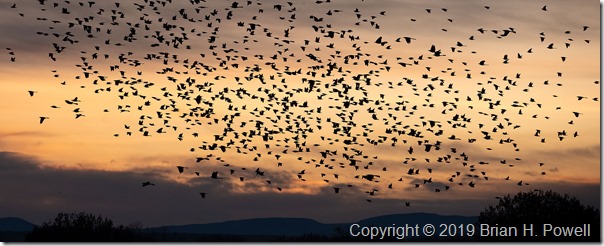
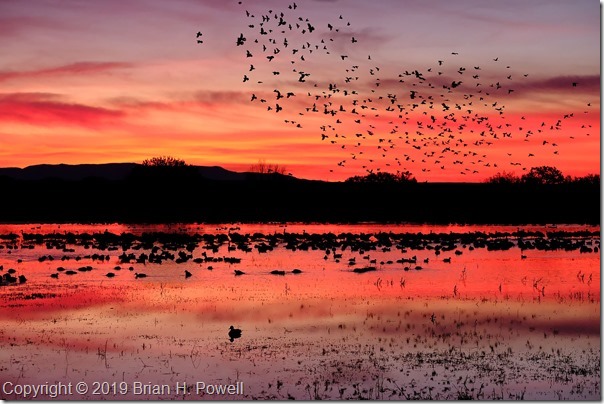
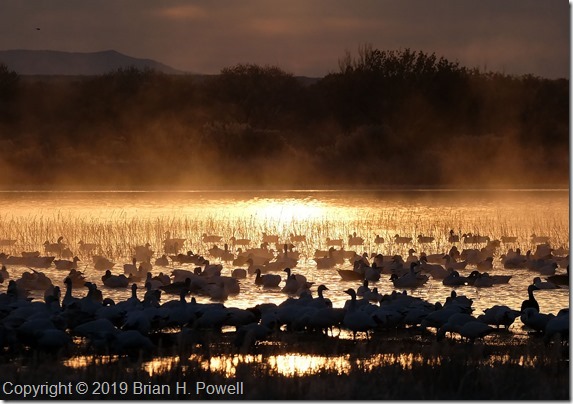
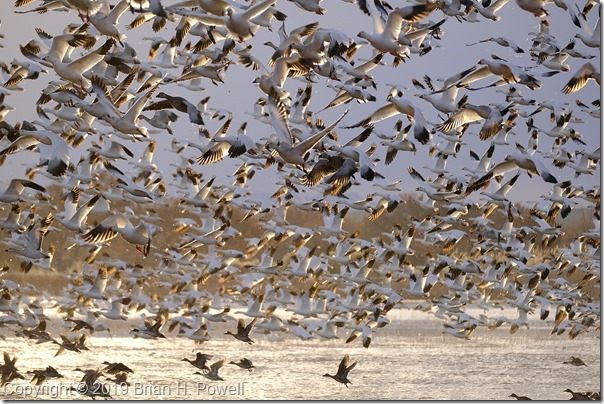
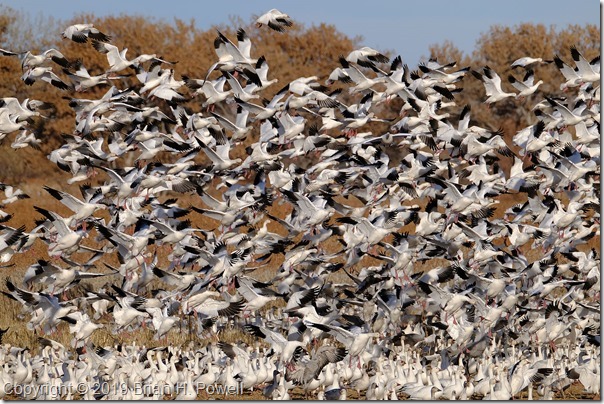


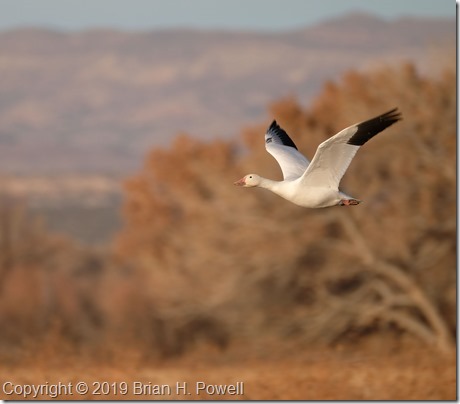
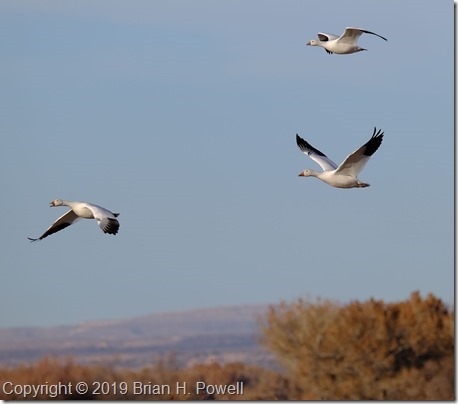
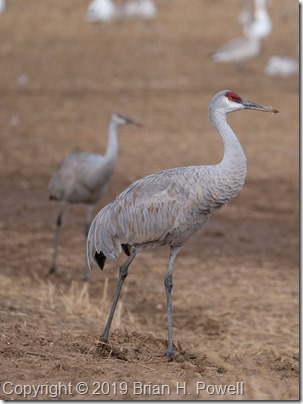
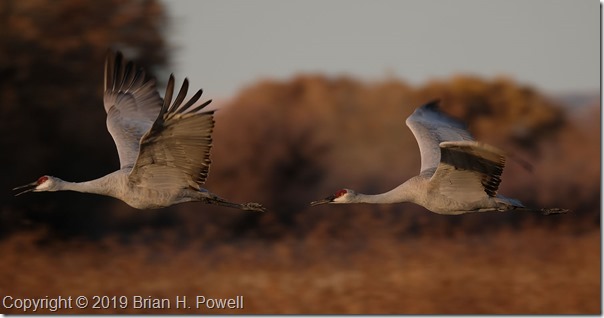
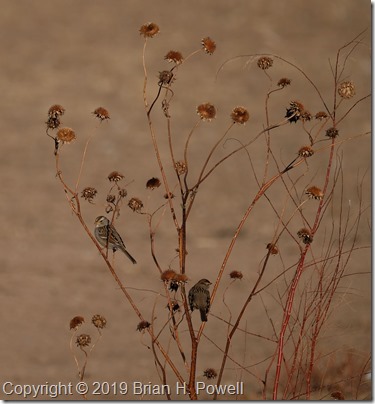
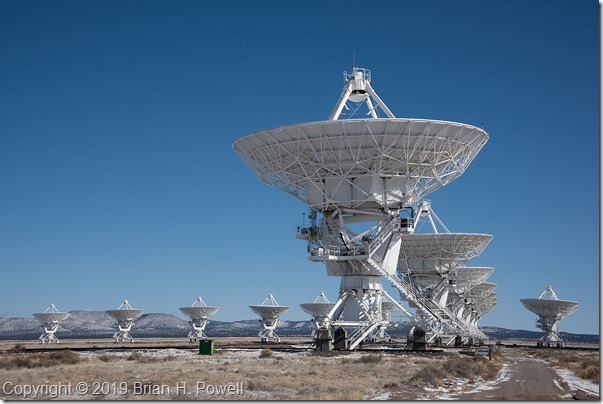
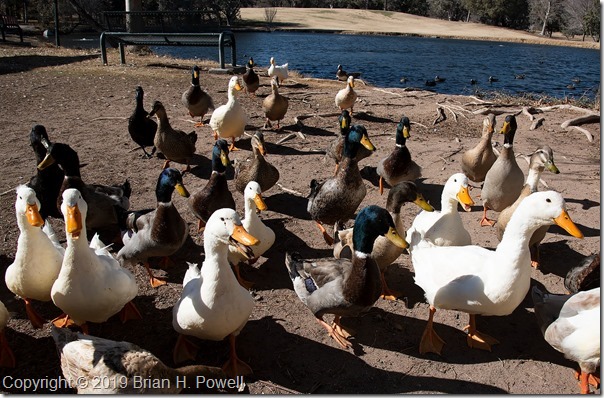
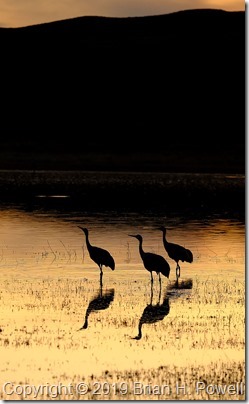

Beautiful! Thanks for sharing. Always wanted to go there….